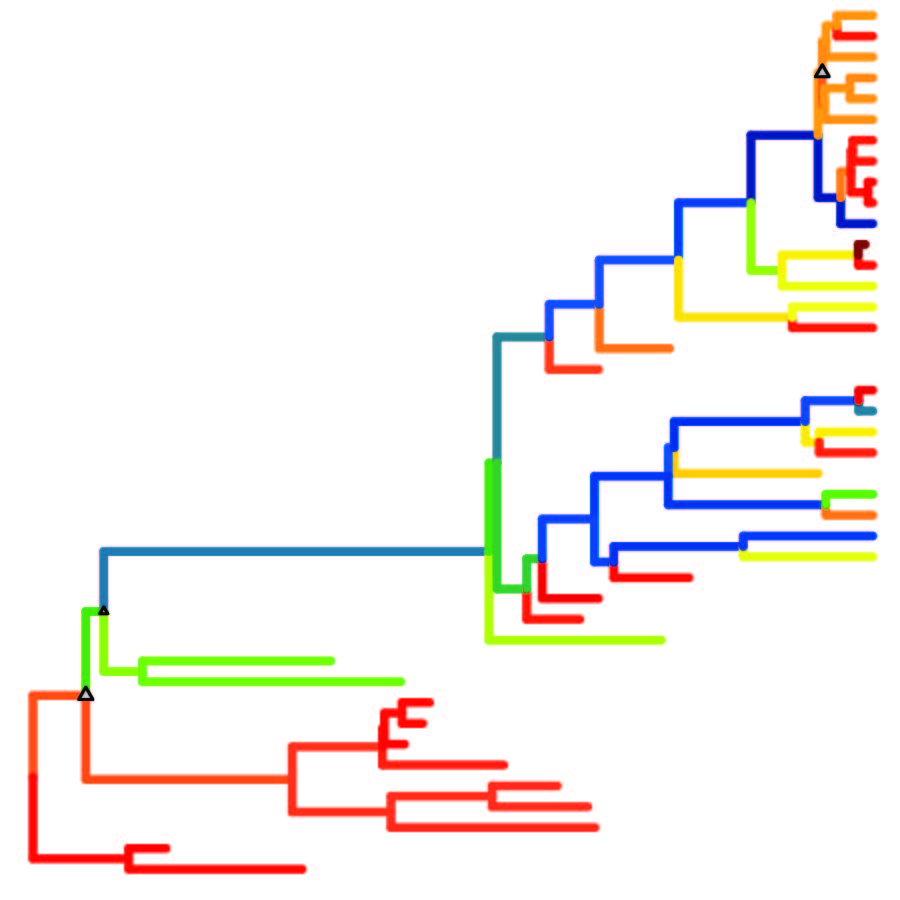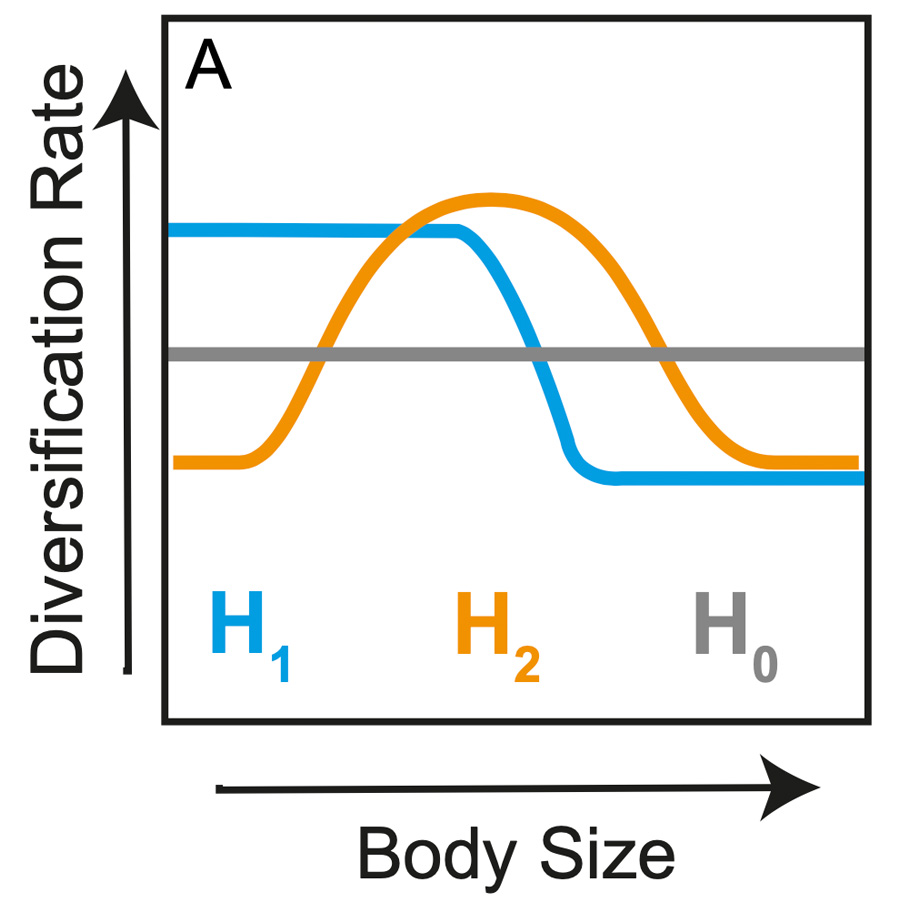Research
Morphological Evolution
 How does phenotypic diversity evolve? What are the drivers and constraints of phenotypic change through deep time? To address these questions, we use 3D imaging and advanced shape analysis techniques to quantify phenotypic variation. We are particularly interested in the evolution of skull and axial skeletal morphology and how extrinsic (e.g., climate, habitat) and intrinsic (e.g., trait interactions, development) relate to morphological variation.
How does phenotypic diversity evolve? What are the drivers and constraints of phenotypic change through deep time? To address these questions, we use 3D imaging and advanced shape analysis techniques to quantify phenotypic variation. We are particularly interested in the evolution of skull and axial skeletal morphology and how extrinsic (e.g., climate, habitat) and intrinsic (e.g., trait interactions, development) relate to morphological variation.
Phylogenetic Comparative Methods
 A key component of our research is the development and application of phylogenetic comparative methods- a key component of understanding evolutionary morphology in a historical context. Our work in this area has included developing a new method for evaluating the strength of phenotypic covariance using phylogenies, as well as a project using simulated phylogenies and phenotypes to understand how trait covariance shapes evolvability and evolutionary rates.
A key component of our research is the development and application of phylogenetic comparative methods- a key component of understanding evolutionary morphology in a historical context. Our work in this area has included developing a new method for evaluating the strength of phenotypic covariance using phylogenies, as well as a project using simulated phylogenies and phenotypes to understand how trait covariance shapes evolvability and evolutionary rates.
Diversification
 Why are some groups of organisms more diverse than others? Our team is interested in using diversification modelling to address this key question in macroevolution. We are using trait-dependent diversification models to understand how key organismal traits bias some clades toward rapid speciation or extinction.
Why are some groups of organisms more diverse than others? Our team is interested in using diversification modelling to address this key question in macroevolution. We are using trait-dependent diversification models to understand how key organismal traits bias some clades toward rapid speciation or extinction.